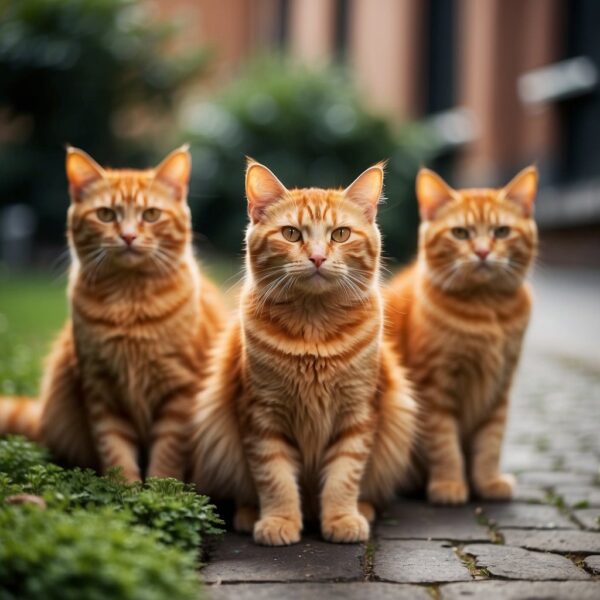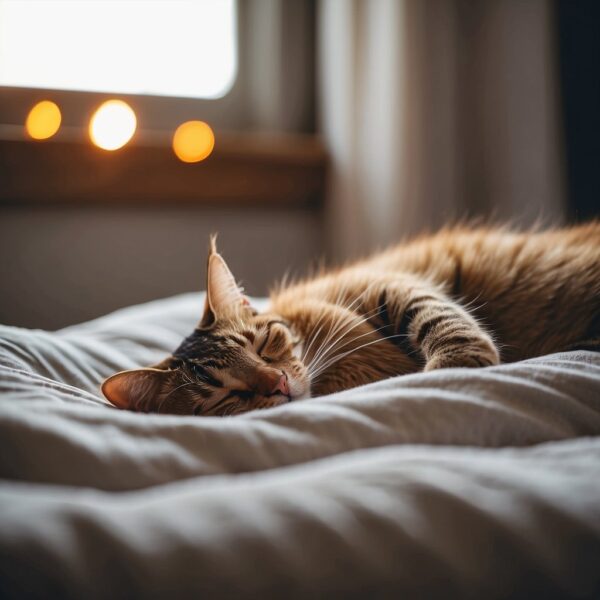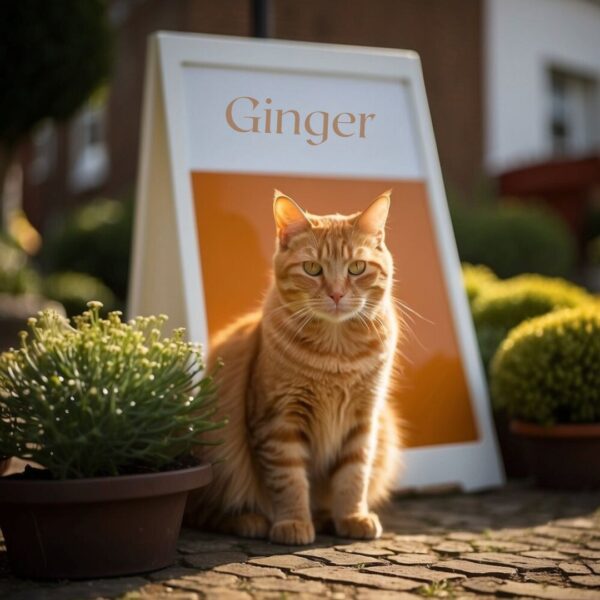
Exploring the Ginger Cat Myth
Orange cats have become a popular subject of internet jokes, often labeled as “stupid” or “chaotic” by social media users. The idea that orange cats are inherently less intelligent is a stereotype, rooted more in viral trends and anecdotal observations than in scientific evidence. This view persists largely due to the playful and sometimes mischievous behaviors many orange cats display, which people often interpret as signs of being less smart.
Despite these stereotypes, the reality is more nuanced. Orange cats can display a wide range of personalities, and studies have not shown any link between fur color and intelligence. The persistence of the “dumb orange cat” trope is driven by online culture and entertaining stories, rather than factual differences in cat intellect.
Key Takeaways
- Orange cat stereotypes are fueled by viral trends and anecdotes.
- No scientific evidence supports a link between fur color and intelligence.
- Personality in orange cats varies as much as in any other cat.

Origins of the Orange Cats Are stupid Stereotype
The stereotype that orange cats are less intelligent or more chaotic has both historical and cultural roots. Factors include biological traits and the effects of viral content online.
Historical Context
Orange cats, especially males, are more common due to genetics. The orange coloring is linked to the X chromosome, leading to a higher number of male orange cats.
Historically, cat behavior has been generalized based on coat color. People noticed that orange cats often exhibited bold and sometimes attention-seeking behavior, which stood out in both urban and rural settings.
In past decades, some pet guides and popular media described orange cats as particularly friendly but sometimes clumsy or mischievous. Over time, repeated anecdotes and casual observations cemented these traits as general expectations.
Table: Common Perceptions of Orange Cats through History
| Era | Trait Noted | Source |
|---|---|---|
| Early 1900s | Affectionate, Bold | Pet guides |
| 1970s-1990s | Mischievous, Social | Pop culture, TV |
| Modern Day | Silly, “Dumb” | Social media posts |
These ideas persisted, blending real behavior differences with stereotype.
Internet Memes and Media Influence
The rise of social media amplified stereotypes about orange cats being stupid. Viral memes, joke threads, and short videos often depict orange cats as goofy or lacking common sense.
Platforms like TikTok and Reddit popularized phrases such as “orange cats share one brain cell.” These jokes tend to show orange cats falling off furniture or getting into odd situations, reinforcing the stereotype with visual evidence.
Lists and memes are easily shared, so media influence spreads the “dumb orange cat” image rapidly. Even Yahoo News and other outlets mention or reference these viral trends when discussing cat personalities.
Repeated exposure to such content makes the stereotype stick, regardless of actual cat intelligence. The cycle continues as more people upload their own videos, adding to the digital folklore around orange cats.

Personality Traits of Orange Cats
Orange cats are often described as outgoing and playful but are also associated with unique behaviors that differ from those seen in other cat colors. Stereotypes highlight their friendliness and mischievous nature, but actual personality traits can vary significantly.
Common Behavioral Patterns
Orange cats, also known as ginger cats, tend to exhibit social and bold behaviors. They often approach new people and environments with curiosity and minimal hesitation. Owners frequently report that these cats seek attention and enjoy interactive play, which sometimes leads to displays of clumsy or chaotic activity.
Many orange cats engage in behaviors that may seem “silly” or even reckless, such as knocking objects over or exploring inaccessible areas. This playfulness can be misinterpreted as a lack of intelligence, but it more accurately reflects confidence and high energy levels. Some studies and anecdotal reports suggest that orange cats may be more vocal and expressive, using a range of meows and chirps to communicate with humans.
A notable trait is their tendency to form strong bonds with their human families. Orange cats are often observed following people from room to room and initiating contact through headbutts or purring. While their behavior might seem exaggerated to some, it typically signals a well-adjusted and confident personality rather than a lack of intelligence.
Comparisons With Other Cat Colors
When comparing orange cats to other colors, including black cats, tortoiseshell cats, and ragdoll cats, some patterns emerge. Black cats are sometimes described as reserved or independent, while tortoiseshell cats may show what some owners call “tortitude,” a blend of sassiness and assertiveness. Ragdoll cats are well-known for their docile and laid-back disposition.
| Cat Color | Noted Traits |
|---|---|
| Orange (Ginger) | Social, playful, confident |
| Black | Reserved, independent |
| Tortoiseshell | Assertive, energetic |
| Ragdoll | Docile, calm, affectionate |
Tortoiseshell cats, for instance, are often seen as feisty and opinionated, contrasting with the sometimes goofy demeanor of orange cats. While personality is influenced by multiple factors, observable trends among cat owners have shaped persistent beliefs about each color.
Despite the stereotypes, most behavior differences between cat colors are subtle and influenced more by individual personality and environment than fur color alone.
Examining the ‘Stupid’ Label
Stereotypes about orange cats often include a reputation for being less intelligent than other cats. This label has spread through memes, social media, and casual conversation, raising questions about where it comes from and whether there is any scientific basis for it.
Myths Versus Facts about orange cats being stupid
The belief that orange cats are “stupid” is not supported by factual evidence. Much of the stereotype comes from internet jokes and anecdotal stories rather than rigorous observation or research.
Orange cats, also known as ginger or marmalade cats, are recognized mostly for their outgoing and social personalities. Some owners interpret playful or bold behaviors as signs of foolishness, but these characteristics are common in many cats regardless of fur color. Much of the stereotype is built on selective memory, where people remember silly acts more when performed by orange cats.
Key factors in the myth:
- Internet culture and viral videos
- Personality traits being misread as a lack of intelligence
- Misconception that unique color equals unique behavior
Scientific Studies on Feline Intelligence
There is no scientific literature that confirms orange cats have lower intelligence than cats with other coat colors. Most feline cognitive research does not distinguish intelligence by coat color.
Studies on feline behavior focus on aspects like problem-solving, memory, and social learning. These studies involve cats of various colors and breeds, revealing individual differences but not color-based patterns. The genetics that make a cat’s fur orange are linked to the X chromosome, but have no known impact on cognitive abilities.
Findings from scientific research:
- No evidence of a relationship between orange fur and lower intelligence
- Intelligence in cats is influenced by genetics, environment, and early experiences
- Behavioral variation exists among all cats, not tied to fur color

Frequently Asked Questions about ginger cat myth
Orange cats are often linked with certain stereotypes and behaviors that can raise questions among cat owners. Understanding these points requires a look at genetics, individual personality, and owner perceptions based on anecdotal experiences.
What is the basis for the stereotype that orange cats are stupid?
The belief that orange cats are less intelligent seems to come largely from internet memes and shared stories, rather than scientific studies. Some owners report their orange cats acting silly or quirky, which gets exaggerated into the stereotype.
Are there personality traits commonly associated with male orange cats?
Some studies and cat owners note that male orange cats are often perceived as more social and friendly than cats of other colors. These observations are not universal and may be influenced by experiences shared online.
Is there a link between orange cats and certain behavioral issues?
No scientific evidence links orange fur color with behavioral problems. Reports of orange cats being more chaotic or energetic appear to be individual personality traits, not a breed or color-specific trend.
What could explain the perception of aggression in orange cats?
Perceptions of aggression can be caused by individual temperament, lack of socialization, or specific experiences rather than fur color. Sometimes, isolated incidents are shared widely and can skew public perception.
Why might an orange cat exhibit biting behavior?
Biting in orange cats is usually related to playfulness, overstimulation, or anxiety. There is no proof that orange cats bite more than other cats due to their coat color.
Are there any genetic reasons behind the behavior of orange cats?
Genetics influence aspects like coat color and sex distribution—most orange cats are male. However, there is no direct genetic link tying orange fur with intelligence or specific behavioral traits.